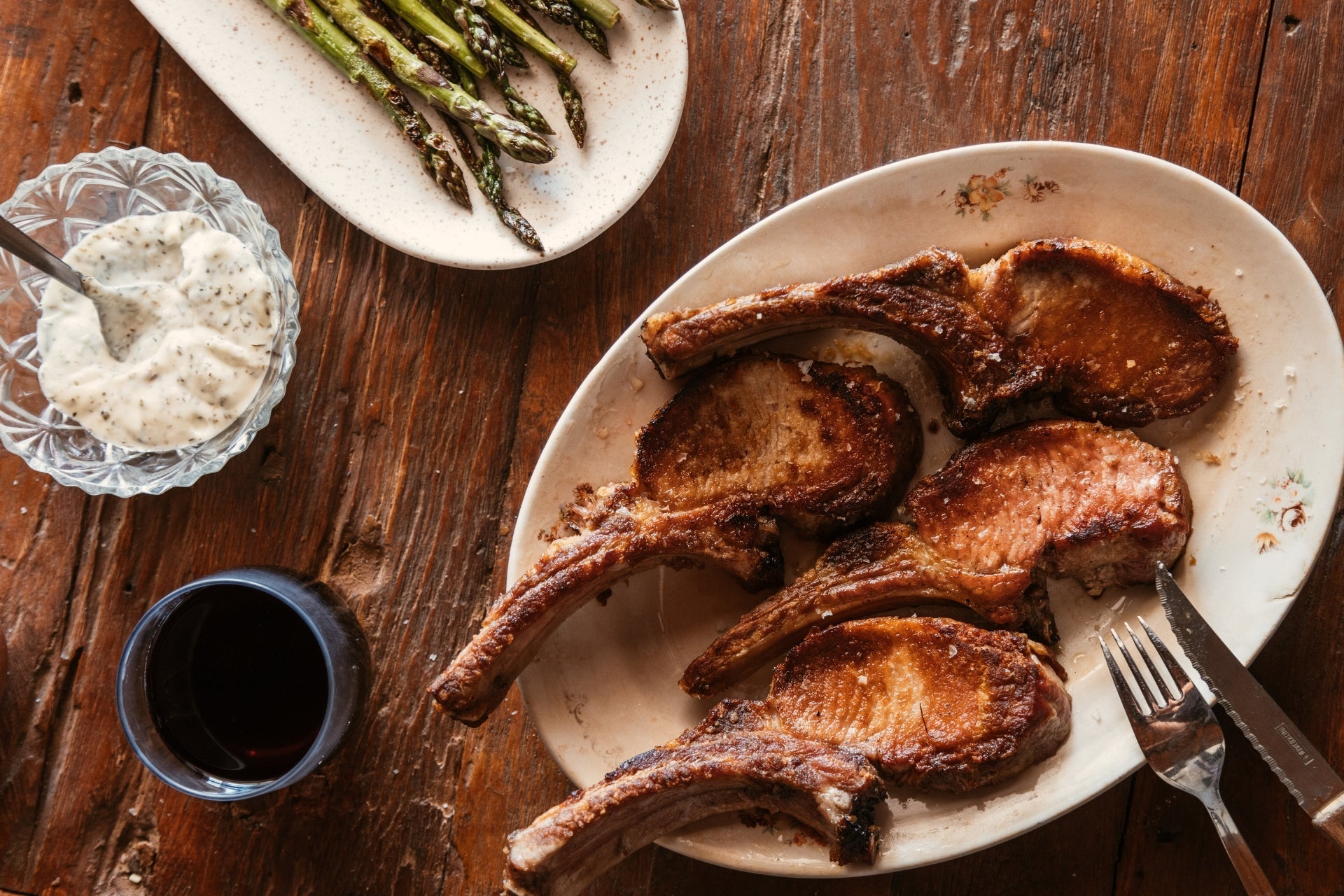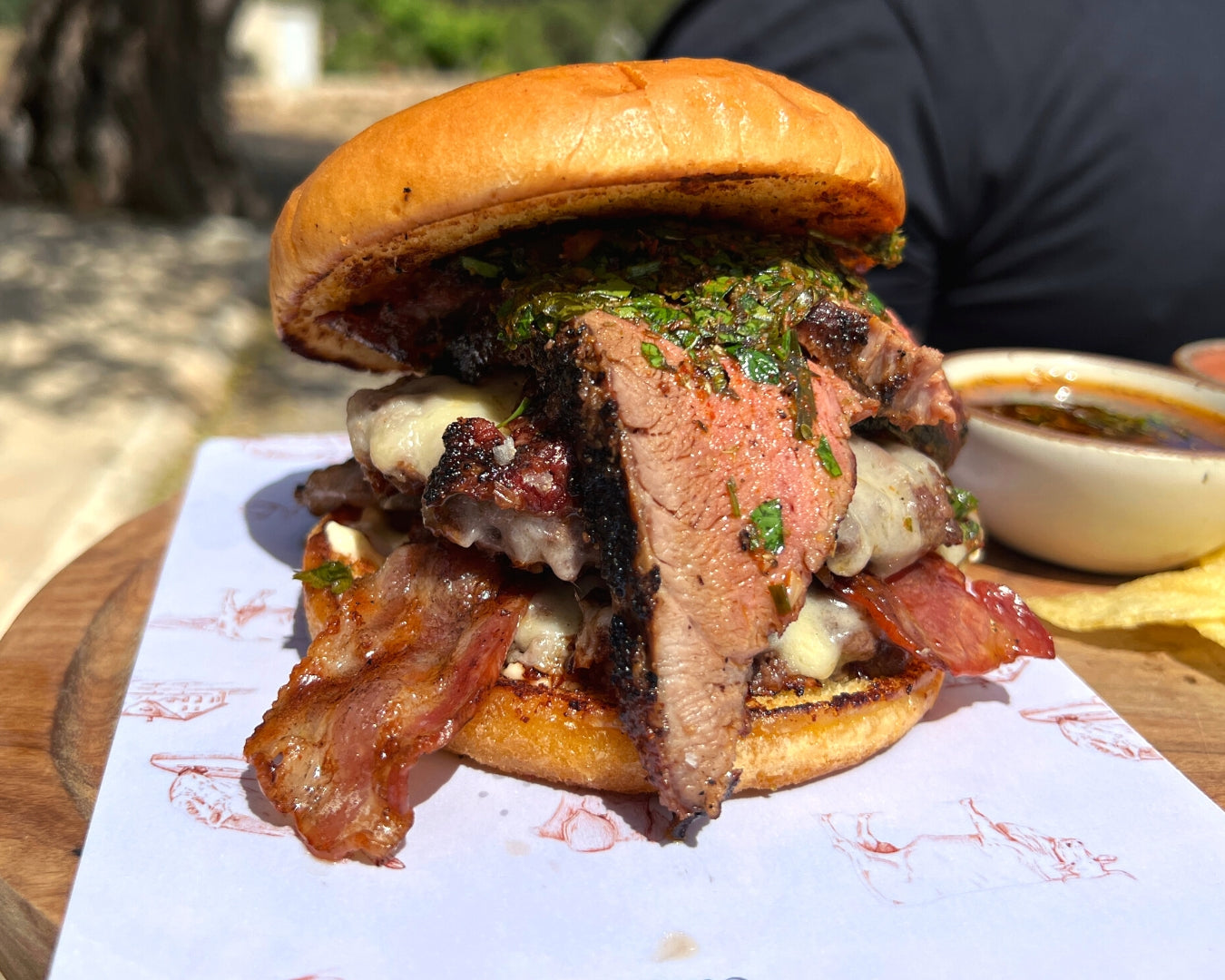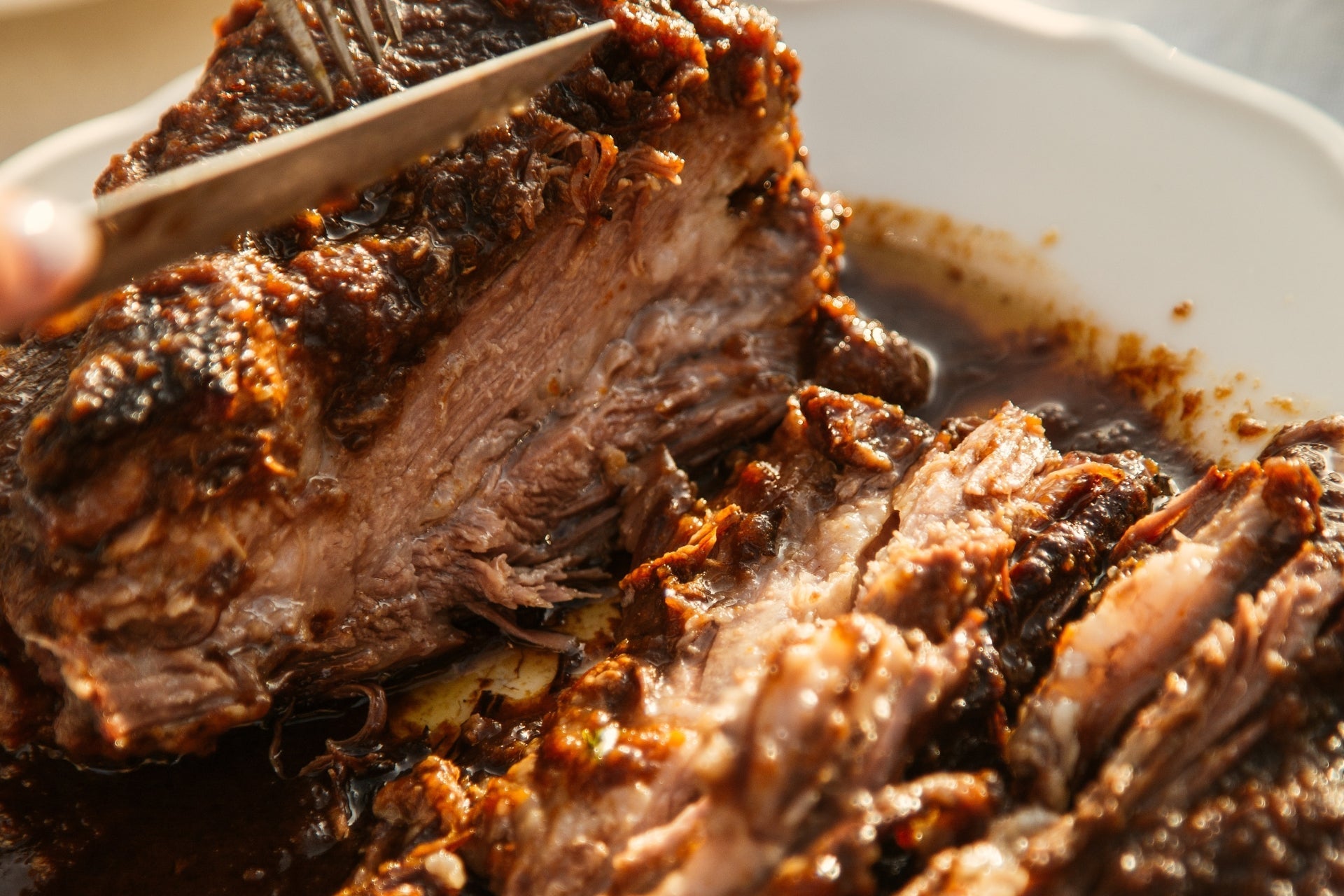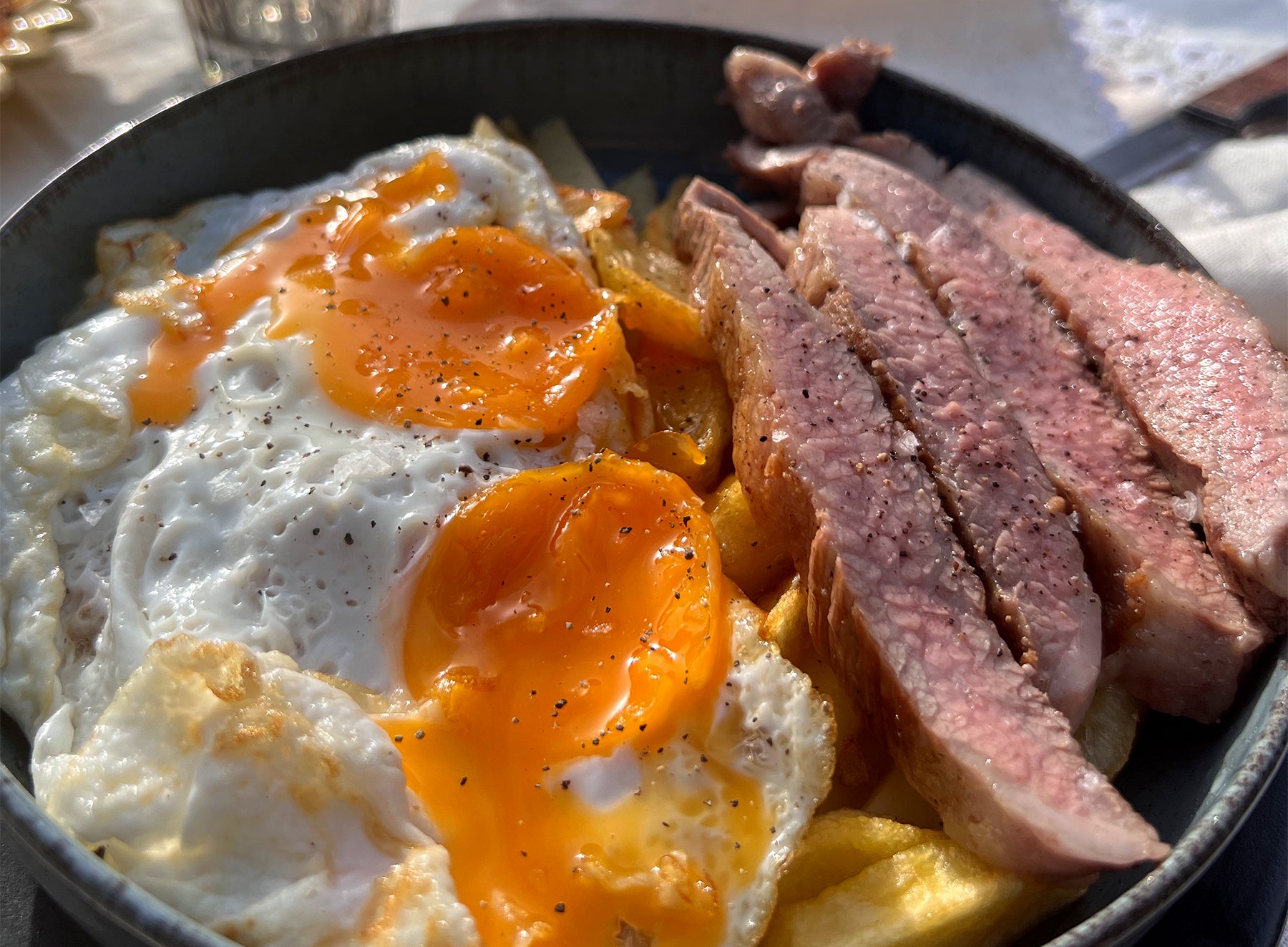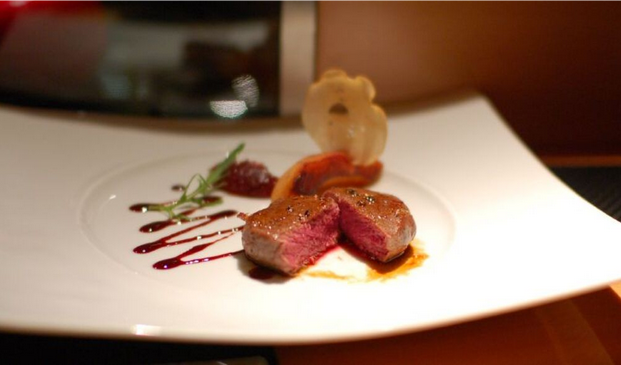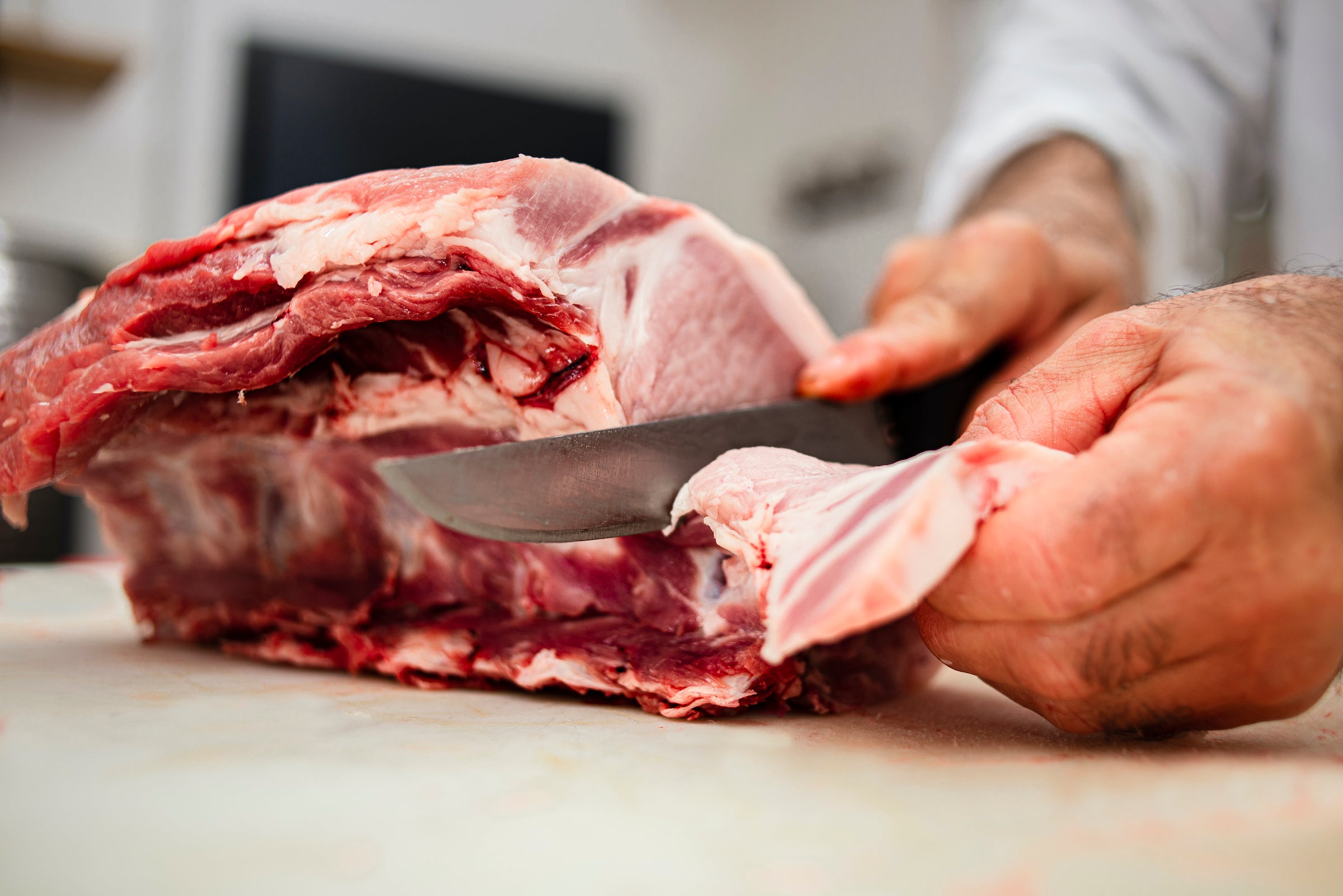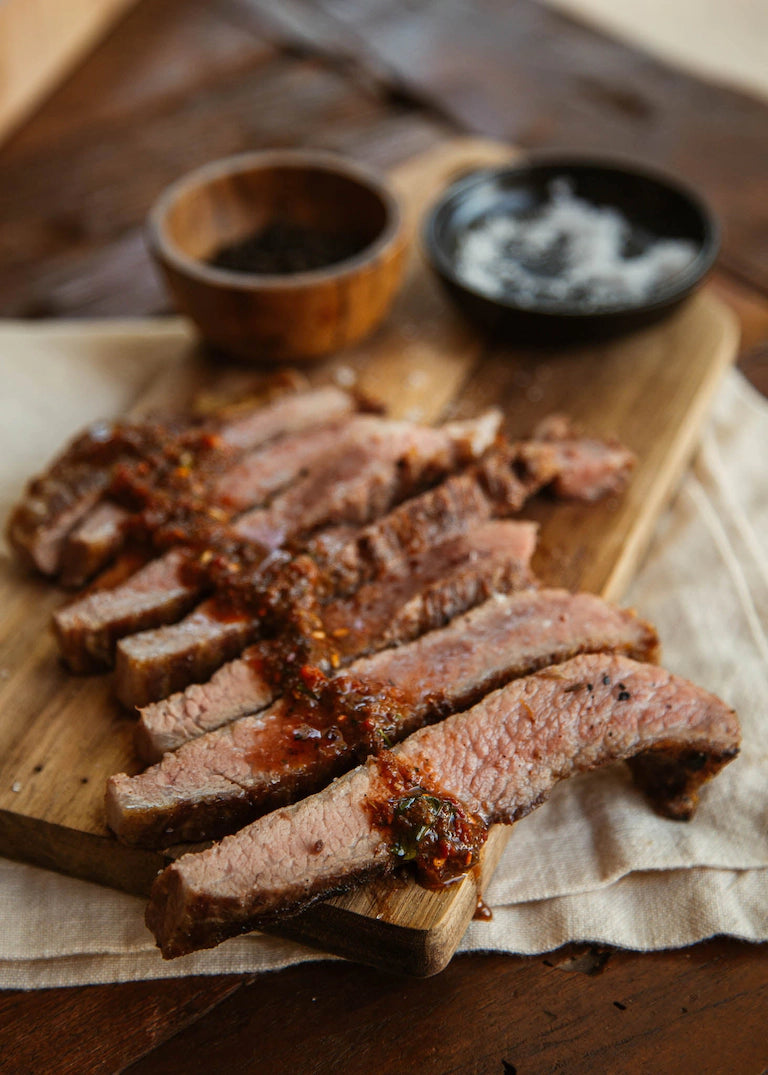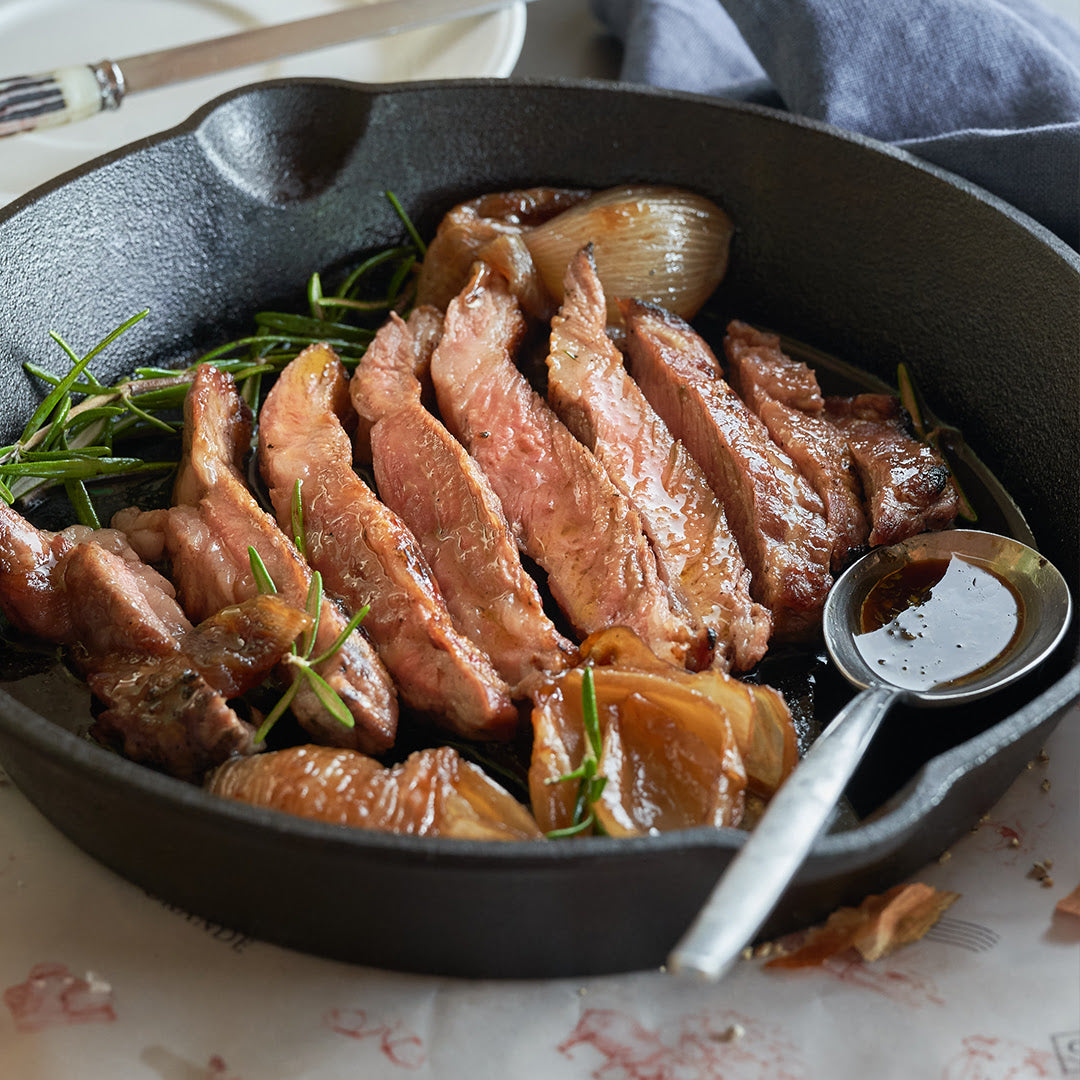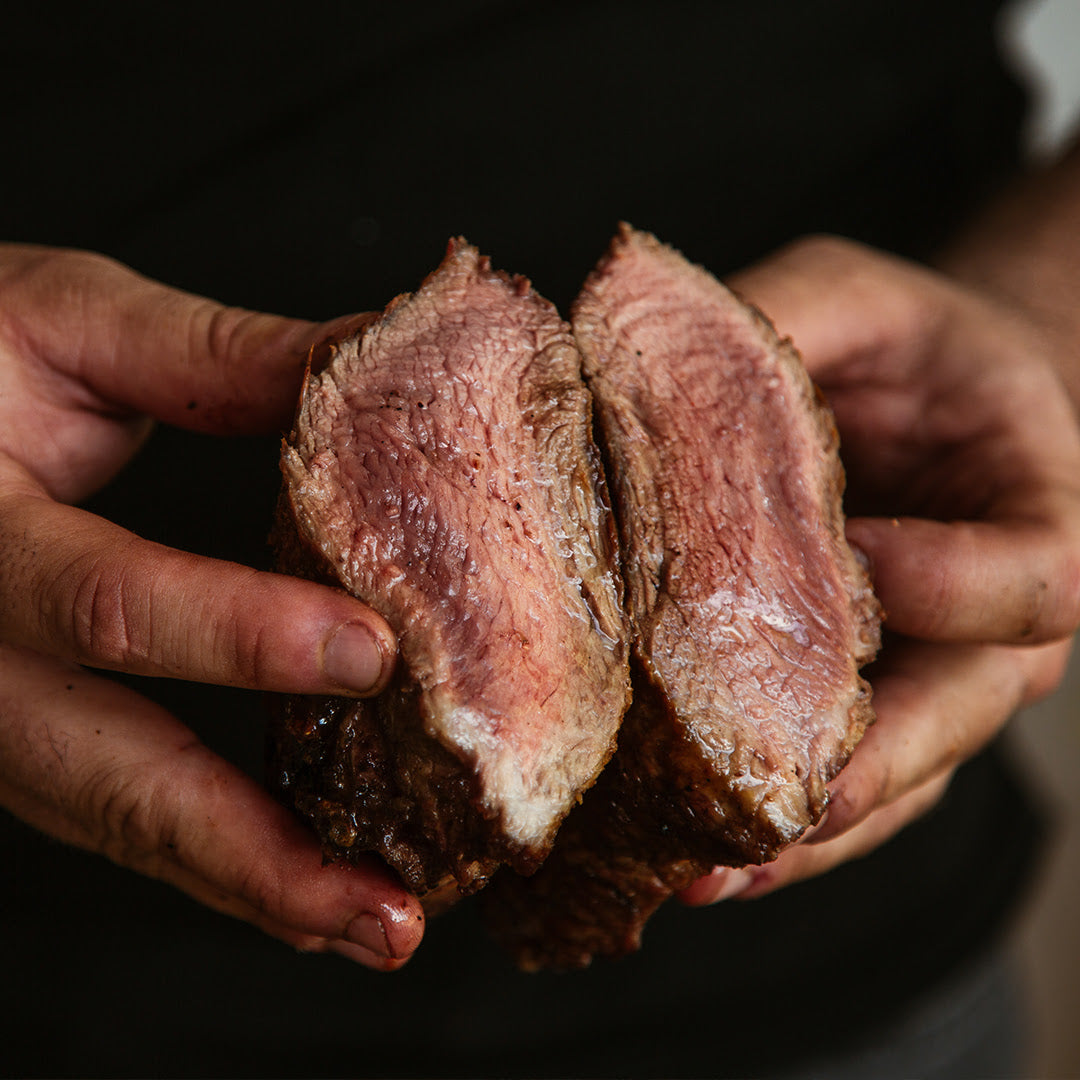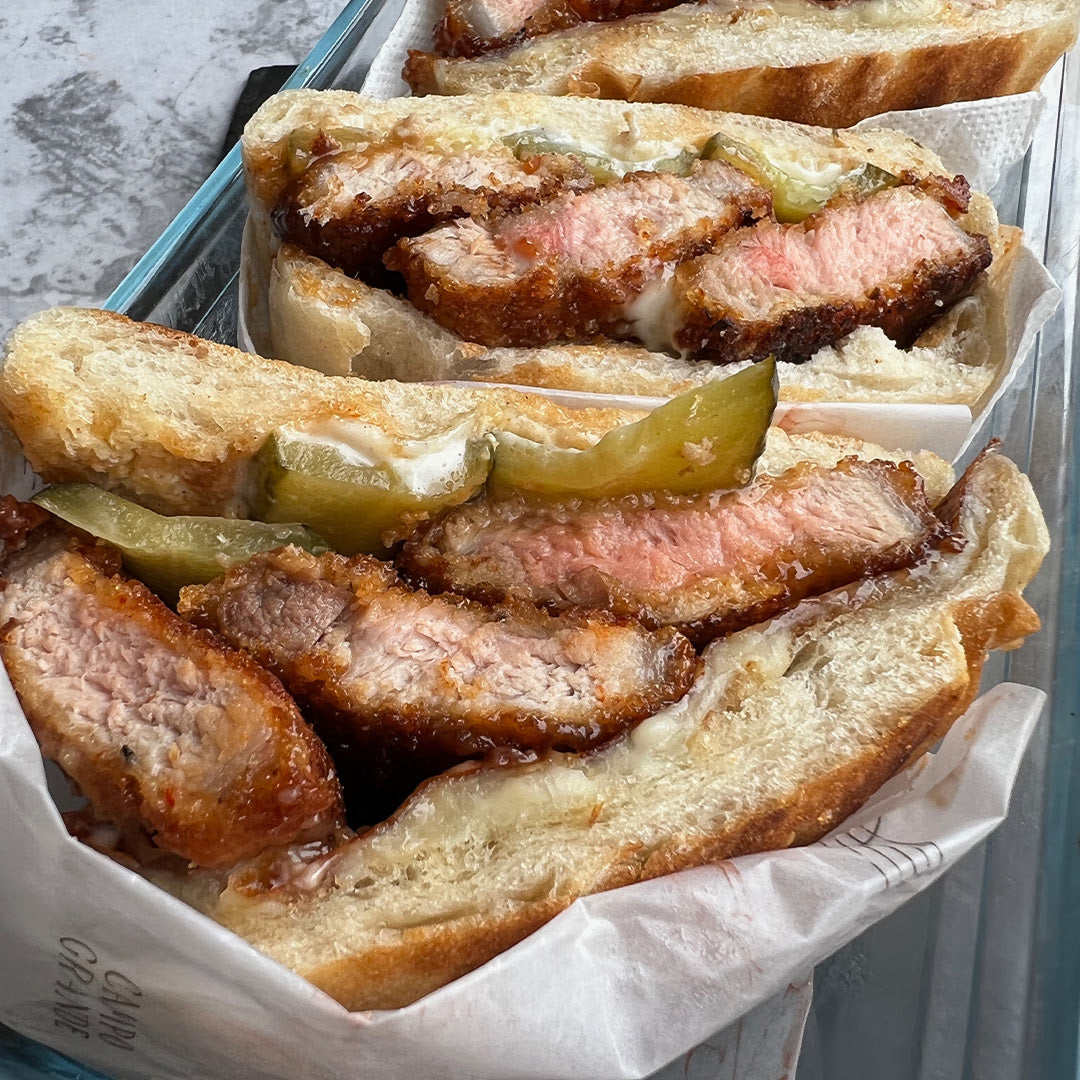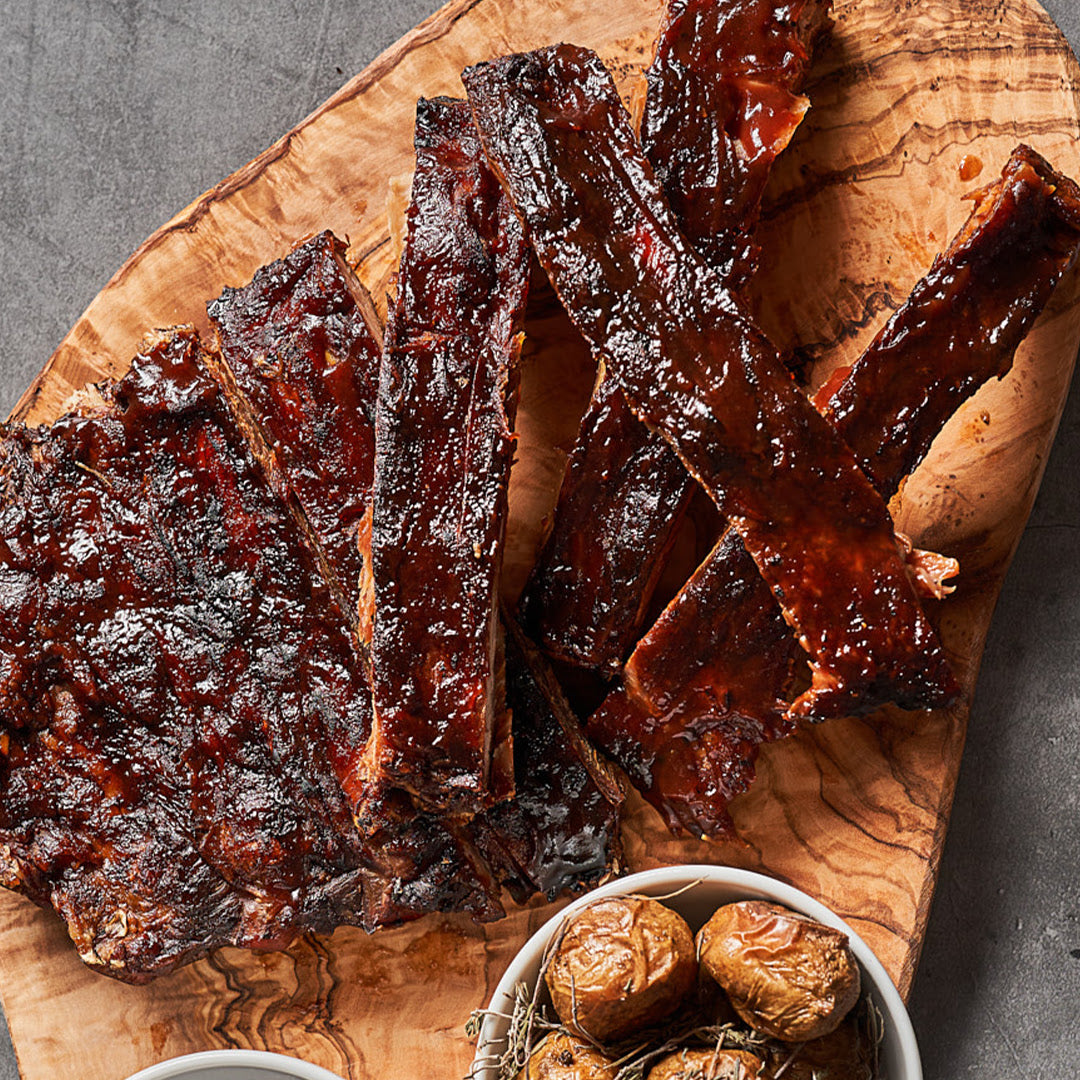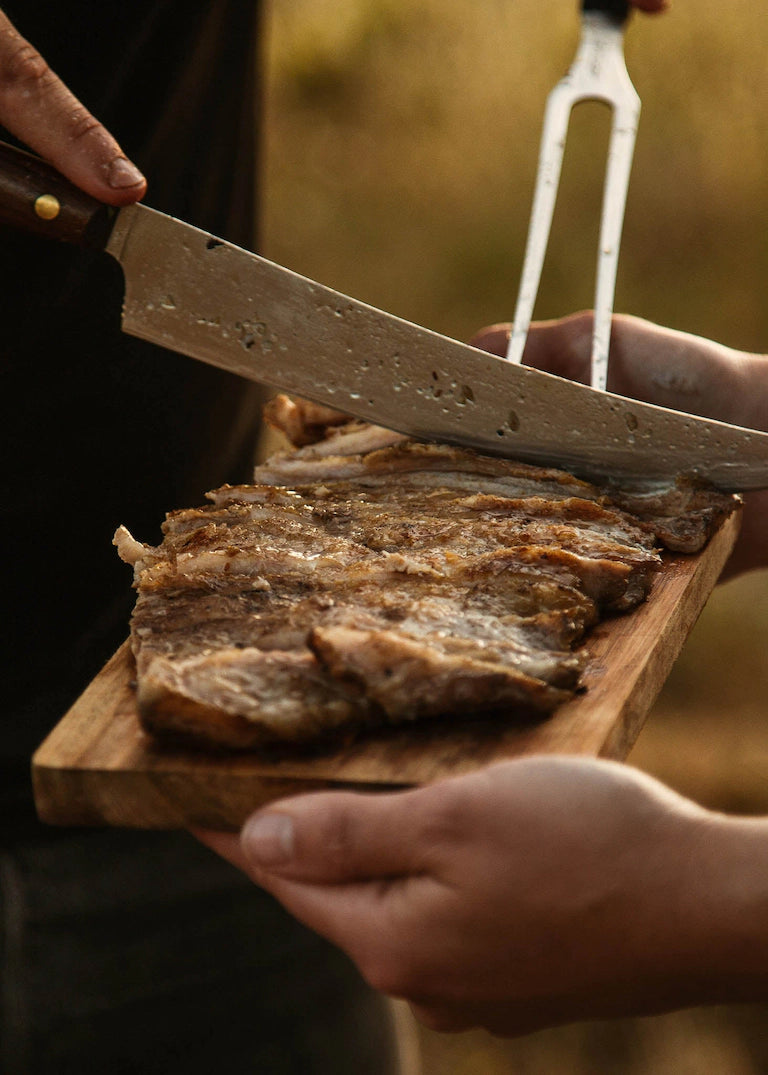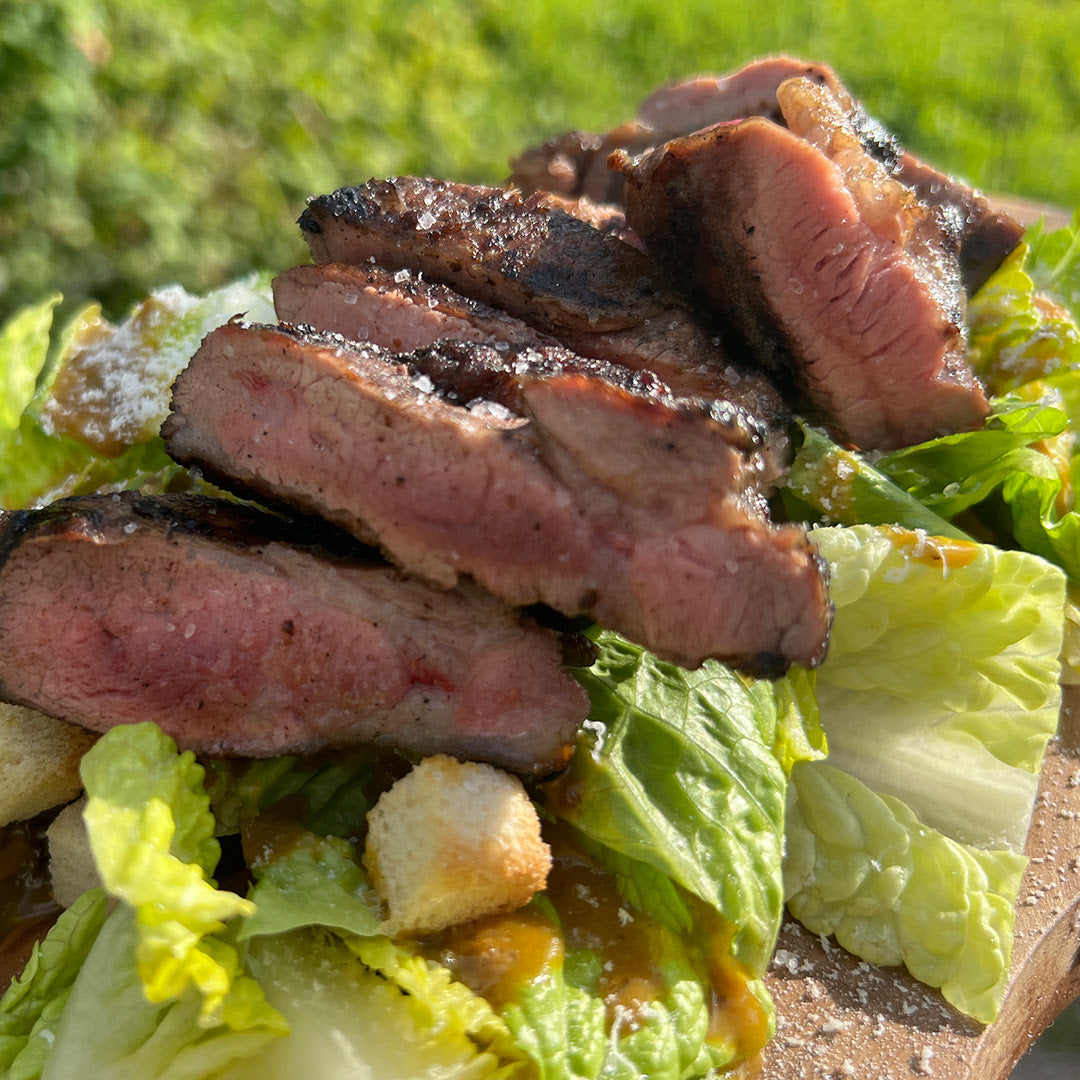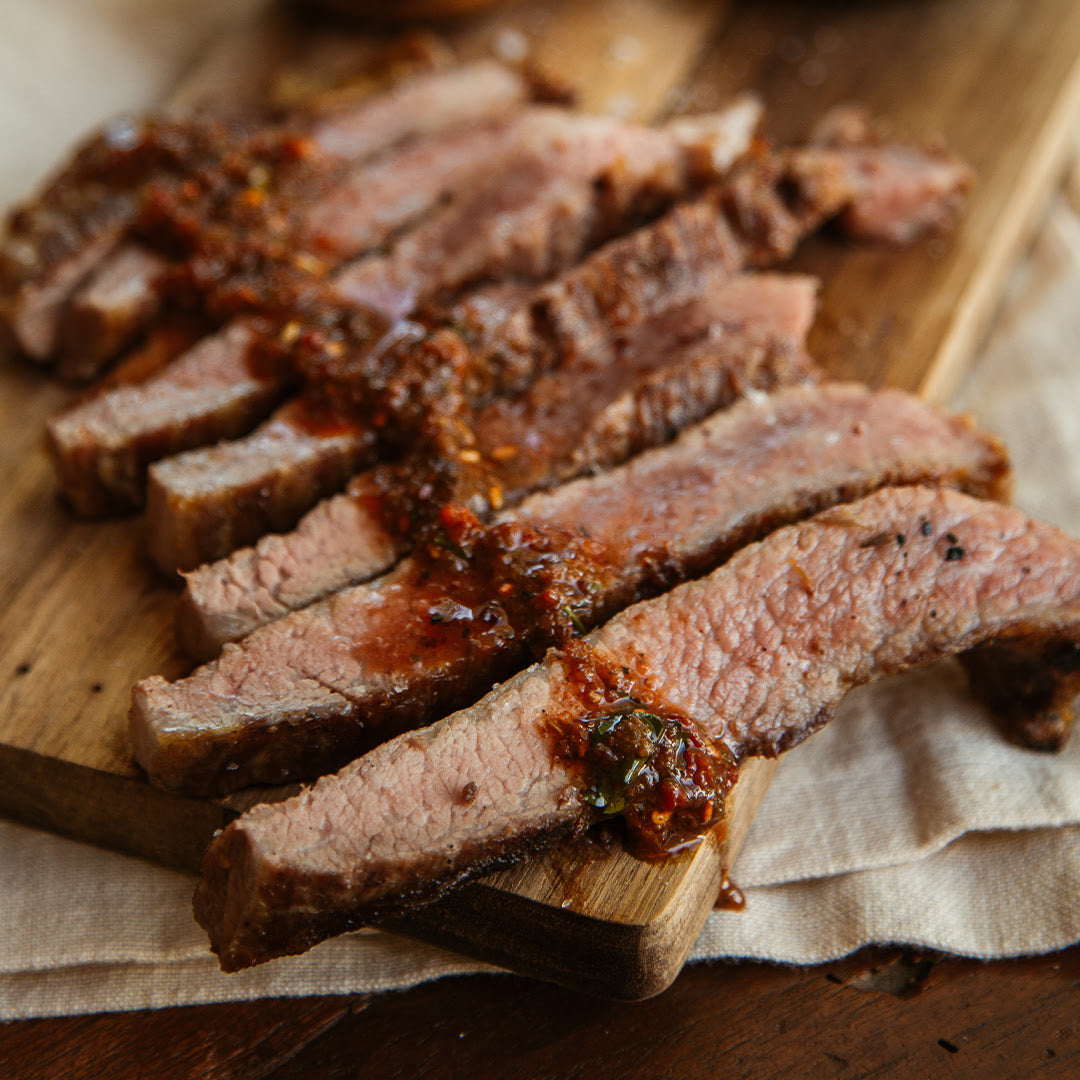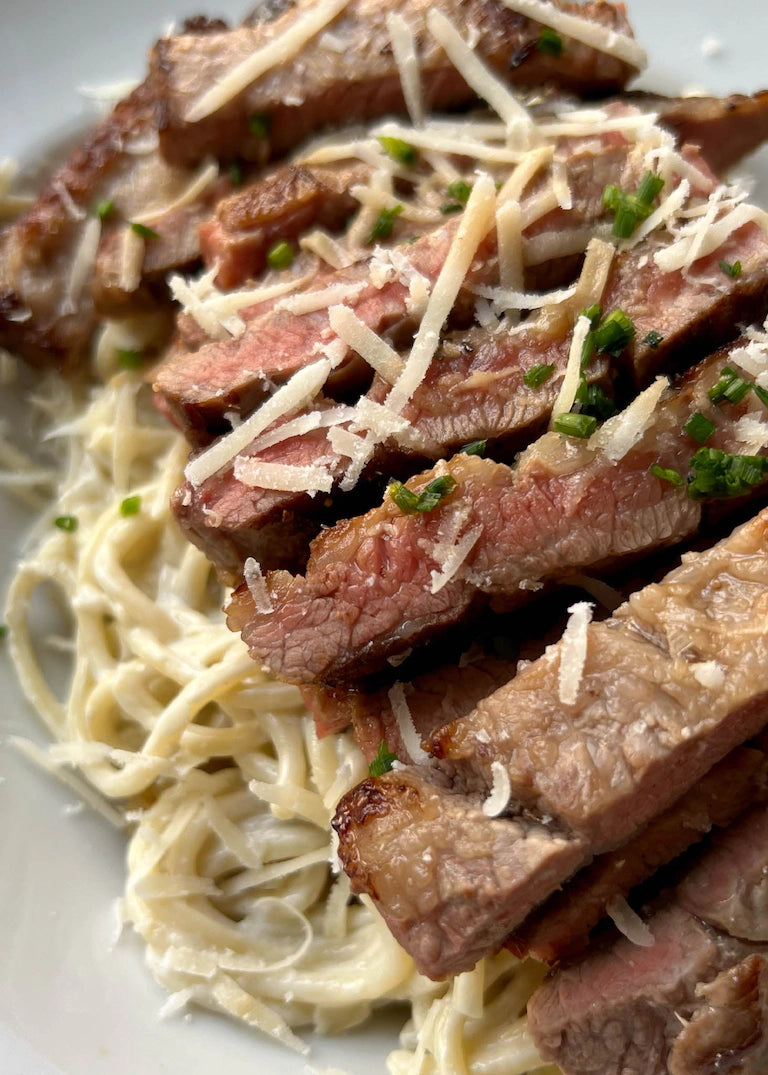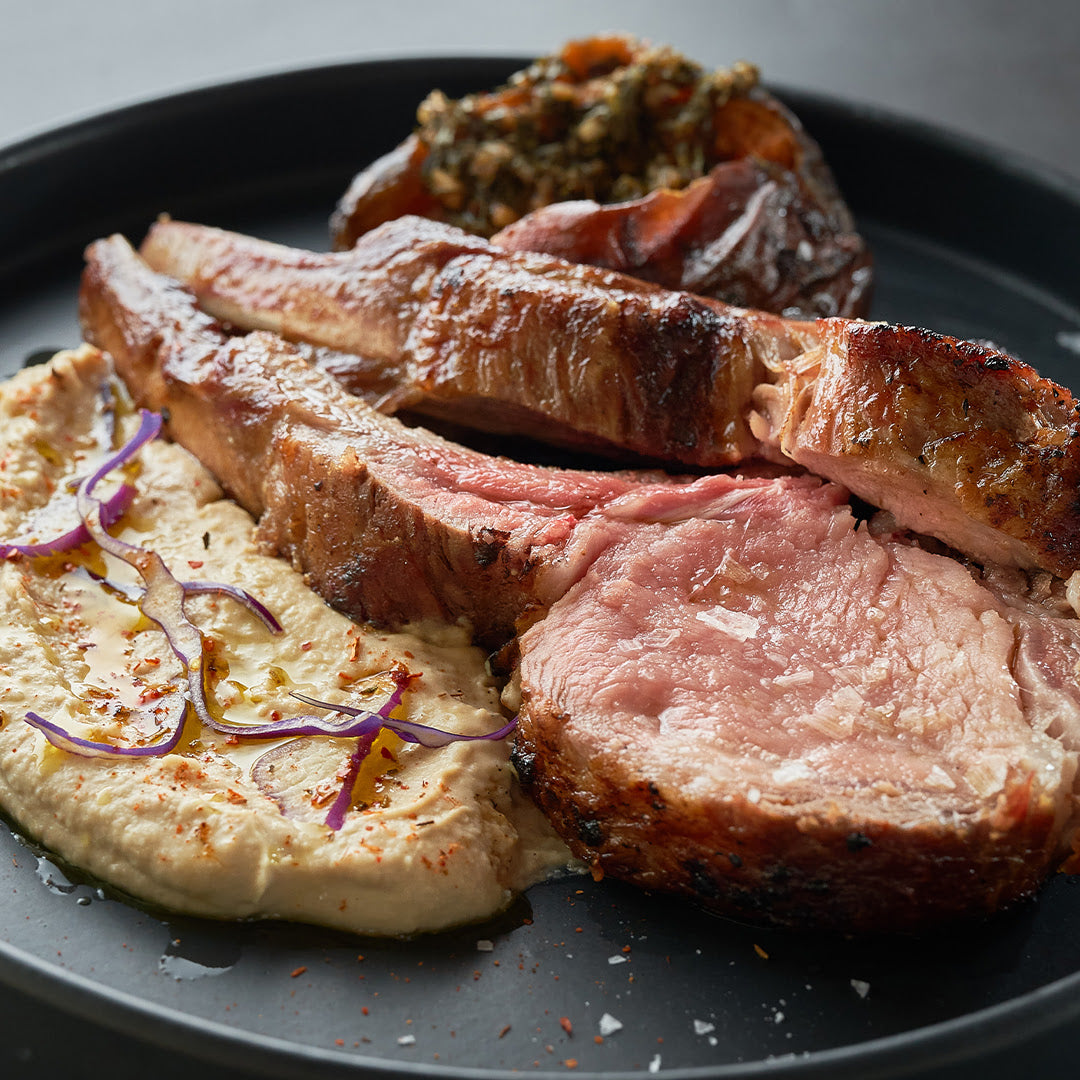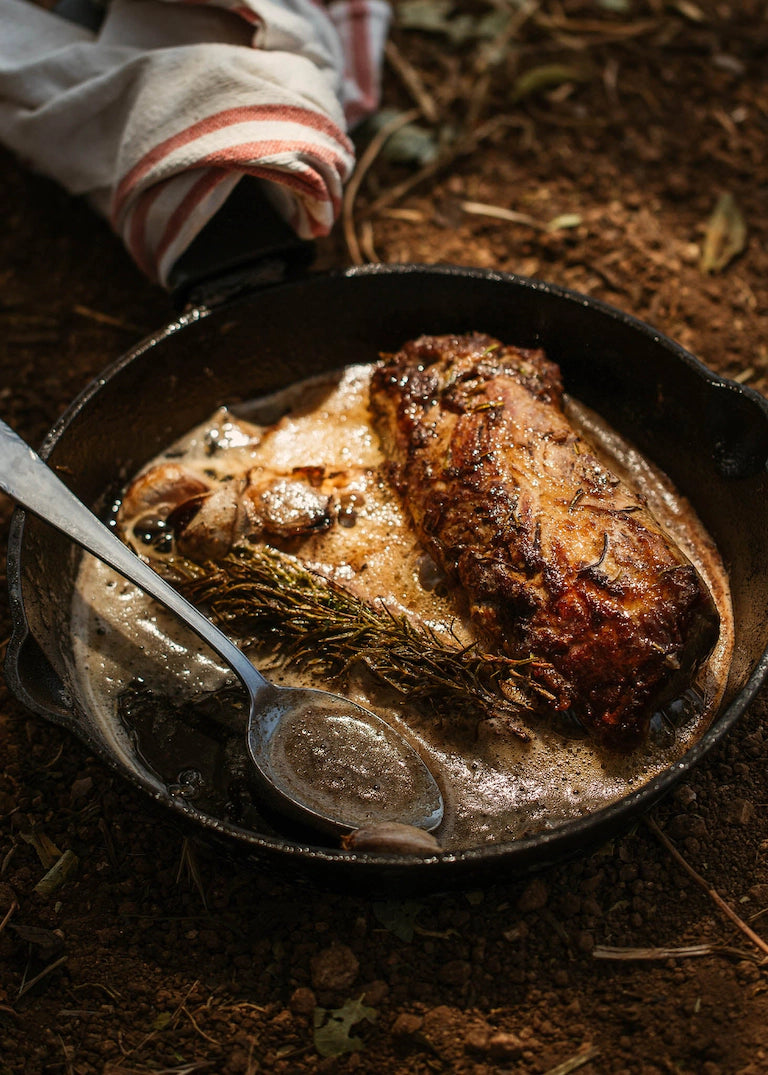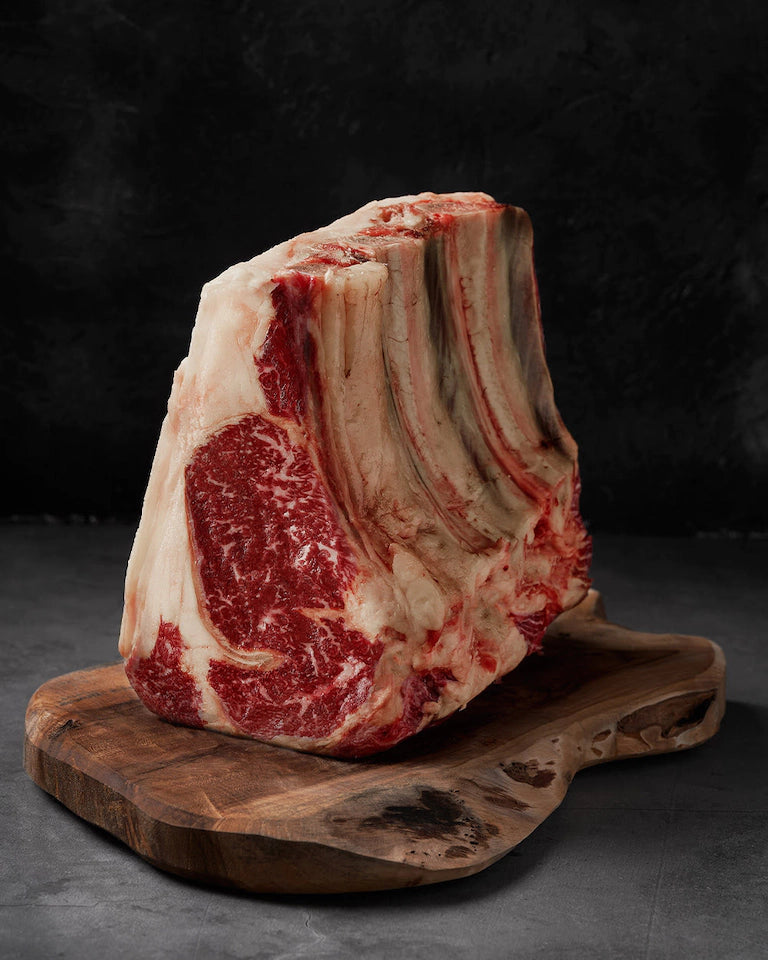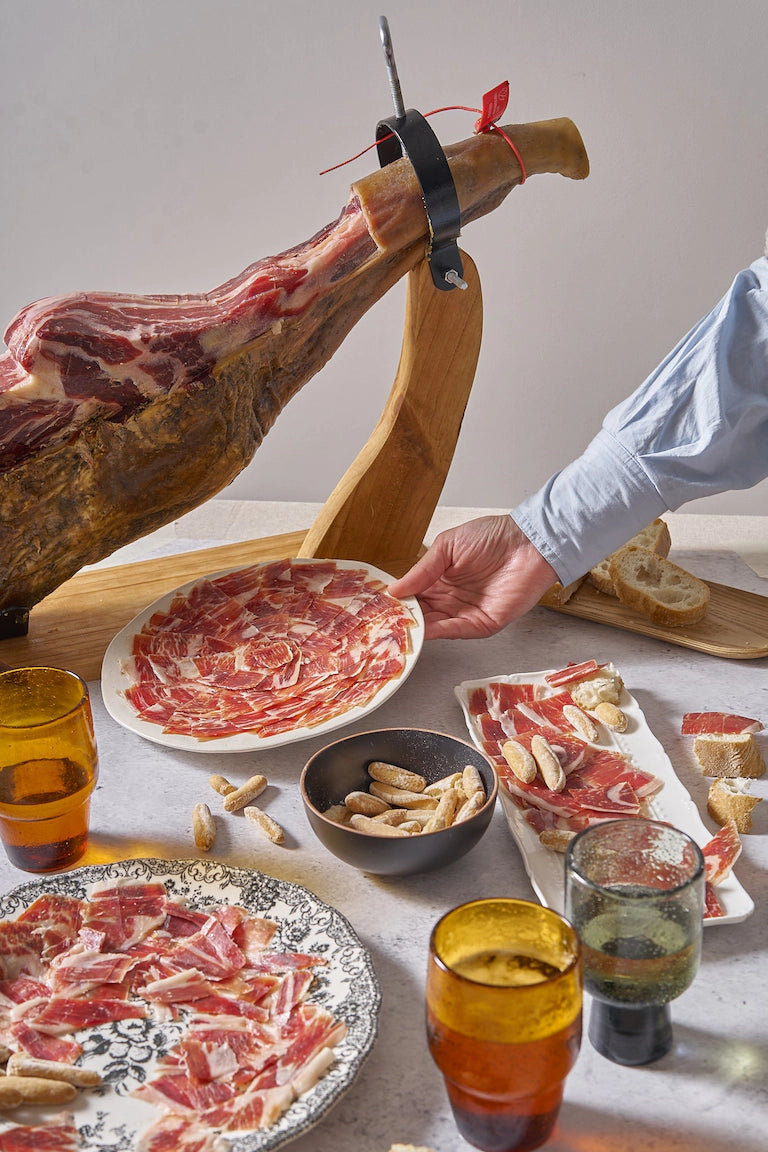
Bavette is a flat cut of steak from the lower chest/abdominal muscles of the cow. Because this area is one of the more active muscles, it’s generally agreed that bavette is an excellent and versatile cut of meat. It’s known as the “butcher’s cut” because it’s believed that butchers would keep this cut for themselves.
The name “bavette” comes from the French, meaning “bib”. Bavette is also known as “flap steak”. It’s quite flavorful, but tough in thicker cuts. It’s as versatile as it is flavorful and can be used in many different recipes - from asian stir-fry to steak jerky. It’s a typical cut found in Latin America, known as “sobrebarriga” in Columbia and “fraldinha” in Brazil.
Because it’s cut from an active muscle on the cow it can be grainy and tough to work with. Especially the thicker cuts. It can sometimes be found in the butcher’s labeled as “sirloin tip”.
Where and How to Buy Bavette Steak
Bavette steak can often be confused with flank steak because of similar flavor profiles. Because of this, you’ll need to be mindful of where you shop for this cut. Find a butcher or a supermarket butchery with workers who know their stuff. Without a knowledgeable butcher, who knows what you may be getting. Even if it’s the proper cut, what about the quality? Finding a butcher who knows their way around meat is more important than you may think.
If you’ve found your perfect butcher, you’ll still need to know what to look for in a high-quality steak. Keep an eye on the color, it should be a fresh and bright red. The marbling should be thick and the texture should be tender. The muscle fibers should look loose, with clear spaces in between the fibers. The more loose the m uscle fibers, the easier it’ll be for marinades and rubs to absorb into the meat - adding extra zing and flavor.
How to Cook Bavette Steak
Just like any other meat, you’ll want your Bavette to reach a certain temperature - regardless of the cooking method employed. No matter how you choose to heat your steak, the USDA states the recommended internal temperature for beef is 145 degrees Fahrenheit. It can safely drop to 130 if you’re trying for medium-rare.
Skillet
This is a quick, extremely efficient and practical cooking method. You simply heat your pan or skillet on high, sprinkle some salt and pepper on your steak - or whatever you’re seasoning it with - and cook for 1-2 minutes on each side. A little longer if you’re after medium-well, or some char.
Grill
Everybody loves some grilled steak, and Bavette cuts lend themselves well to grilling - gas, wood, or charcoal, the type doesn’t matter. Just grill for 9-12 minutes, turning over at the halfway point. Be sure to let your steak rest for 5 minutes before serving.
Sous Vide
This cooking method may not be very familiar to you. It’s a process where you vacuum seal the steak in a bag and set it to cook in water. Depending on the thickness of the meat, you’ll need to cook it for anywhere from 90 minutes to 2 ½ hours. The longer you cook it, the more tender it’ll get.
Crock Pot
Another method you may not have considered is the crock pot. It’s perfect for cooking tough cuts of steak like the Bavette. This method won’t work for you if you’re pressed for time, because you’ll need a solid six to eight hours of cooking time to get that highly sought after melt-in-your-mouth texture.
Conventional Oven
Yep, you can cook your Bavette in the oven. It’s a surprisingly quick method. Before you pop your steaks into the oven, you’ll want to cover them in olive oil - along with your seasonings - to help keep it moist while cooking. Set the oven to 450 degrees Fahrenheit and cook them on one side for 5 minutes, and the other for 3-4 until your desired doneness level.
Broiling
Surprisingly, a lot of people prefer to broil their Bavette and flank steaks. It works similarly to the grill, creating a nice crispy outer layer without burning or overcooking the steak.The trick to this method is to just cook it 5 minutes on each side if you’re going for medium rare. But don’t go beyond 6 minutes even if you’re after well done. You’ll risk it burning and drying out into a rock.
Final Thoughts
While not a super popular cut of steak, Bavette is versatile and delicious. It can be cooked in many different ways for a wide variety of dishes from stews to jerky strips.
